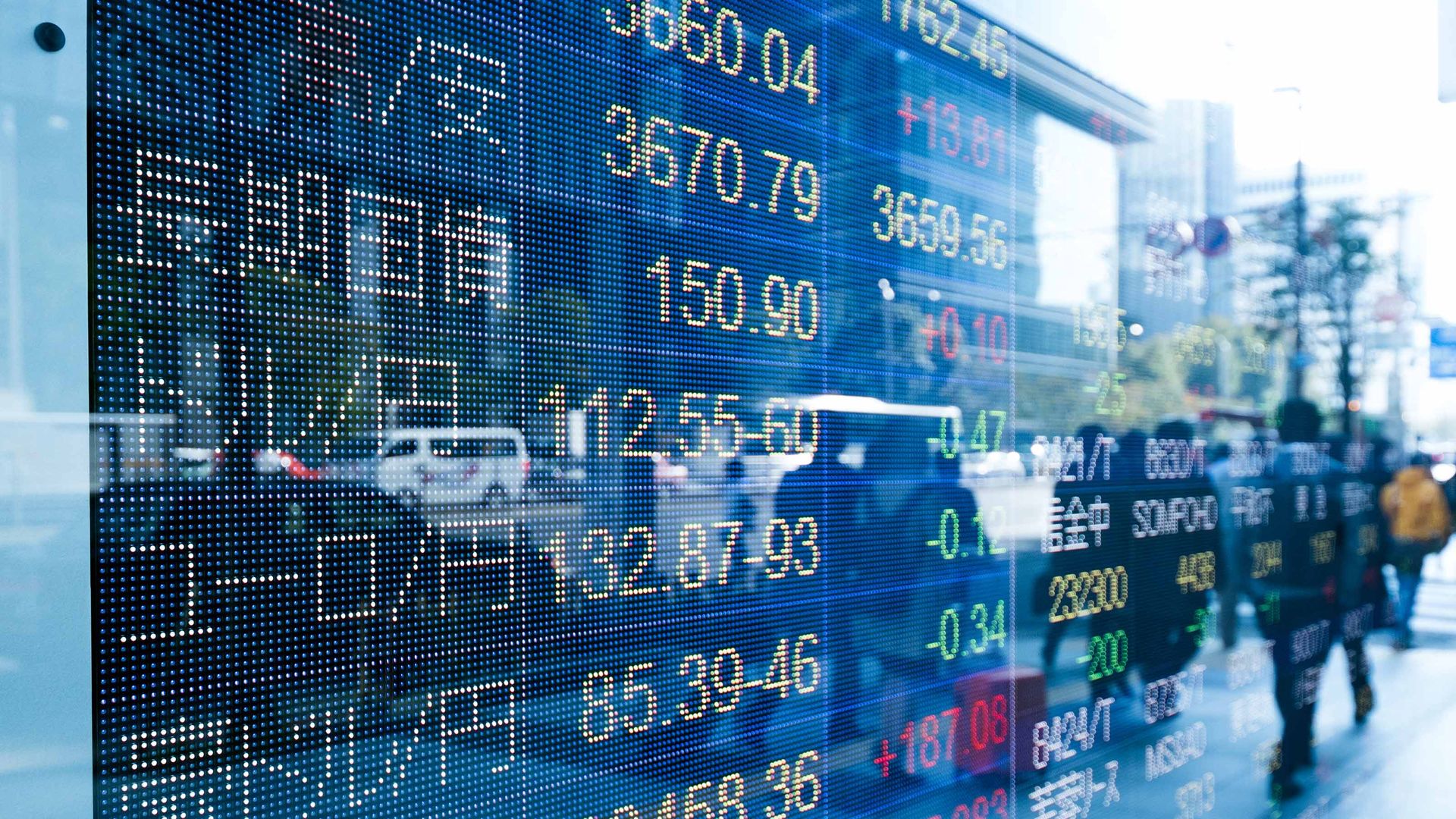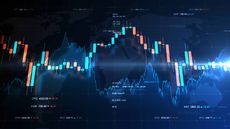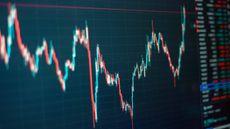The Best ETFs to Buy Now
Finding the best ETFs to buy in a high-inflation environment can seem like a tall task, but these five picks are a good place to start.
- (opens in new tab)
- (opens in new tab)
- (opens in new tab)
- Newsletter sign up Newsletter


Exchange-traded funds (ETFs) offer investors a variety of different strategies to prepare for whatever the market throws at them – rising interest rates, geopolitical uncertainty, economic instability. And we kept all of these in mind as we built this list of the best ETFs to buy now.
As we round out the first quarter of 2023, we've enjoyed at least a modest respite from the turmoil and volatility of last year. Stocks are higher on the year so far, and investor confidence is returning. But that doesn't necessarily mean it's back to business as usual. Many of the factors that drove the bear market in 2022 are still very much alive and well today.
And at the top of the list is inflation.
"The Fed is in a tough spot," explains Doug Robinson, president of RCM Robinson Capital Management LLC (opens in new tab), a registered investment advisor based in San Francisco with $102 million in assets under management. "Inflation continues to come in hot, which forces them to keep tightening by raising rates. But the more they raise rates, the bigger the possibility that they push us into a recession."
There are few immediate signs of recession. The labor market remains tight, with unemployment close to its lowest levels in recorded history, and the latest forecast for GDP growth coming from the Atlanta Fed shows GDP growth this quarter coming it at close to 3%.
Yet the yield curve remains deeply inverted, with short-term interest rates significantly higher than long-term interest rates. This has traditionally been a warning sign of a coming recession. And in its latest earnings release, Walmart (WMT (opens in new tab)) noted that it saw a larger percentage of high-income Americans frequenting its stores of late … which is a major sign that folks across the income spectrum are feeling the pinch of inflation.
So, how do you invest in an environment like this?
Let's take a look at the five best ETFs to buy now.
Data is as of Feb. 27. Dividend yields represent the trailing 12-month yield, which is a standard measure for equity funds.

Vanguard Dividend Appreciation ETF
- Type: Large blend
- Assets under management: $64.4 billion
- Dividend yield: 1.9%
- Expenses: 0.06%, or $6 annually for every $10,000 invested
In a high-inflation environment, it makes sense to focus on quality. And one of the best measuring sticks for a company's quality is a long history of raising its dividend.
Accountants can fudge the numbers on earnings. A creative accountant can even fudge the numbers on sales. But dividends don't lie. Dividends are paid in cold, hard cash.
Furthermore, the payment of a dividend encourages good behavior from management. It shows that they take their investors seriously and like to reward them. And a CEO that is on the hook to pay a dividend is a CEO less likely to blow the company's cash on vanity projects that destroy value.
With all of that as an intro, investors seeking out the best ETFs to buy now will want to take a look at the Vanguard Dividend Appreciation ETF (VIG (opens in new tab), $152.49). VIG tracks the S&P U.S. Dividend Growers Index, which includes U.S. companies that have consistently increased their dividends every year for at least 10 consecutive years. The index excludes the top 25% highest-yielding eligible companies from the index in order to avoid "yield traps," or companies at risk of cutting their dividends.
VIG is not an exceptionally high-yielding fund, with a dividend of just under 2%. But that's ok. The dividend in this case is less about raw yield and more about quality. The ETF is a who's who list of solid American blue chip stocks – and some Wall Street's best dividend stocks – like Johnson & Johnson (JNJ (opens in new tab)), Microsoft (MSFT (opens in new tab)) and Home Depot (HD (opens in new tab)).
Learn more about VIG at the Vanguard provider site. (opens in new tab)

SPDR Gold MiniShares
- Type: Commodities focused
- Assets under management: $5.6 billion
- Dividend yield: 0.00%
- Expenses: 0.10%
Inflation remains stubbornly high. In January, the personal consumption expenditures (PCE) price index, the Fed's preferred inflation gauge, saw its biggest month-over-month jump since June, up 0.6%. And there is no immediate sign of price pressures receding.
There's no easy escape from inflation, as it has a way of permeating throughout the capital markets. But gold has traditionally been a strong inflation hedge over time.
Gold has also traditionally been a good dollar hedge. The U.S. dollar has been exceptionally strong against most major world currencies since 2008. But that doesn't last forever. The dollar has traditionally gone through long bull markets followed by long bear markets. And after hitting highs in the fourth quarter of last year, the dollar has been trending lower.
Investing in gold is not easy for the average retail investor, though. But an excellent, and simple, way to get exposure to the precious metal is via the SPDR Gold MiniShares (GLDM (opens in new tab), $36.08).
GLDM is an ETF backed by real, tangible gold bullion, and its share price tracks the price of gold, minus its very modest management fee. GLDM is one of the absolute cheapest ways to own gold, as its expense ratio is an almost nonexistent 0.10%.
Having at least a small allocation to gold in your asset allocation makes sense in really any environment. And it makes a lot more sense in a high inflation one! This is why the SPDR Gold MiniShares is on this list of the best ETFs to buy now.
Learn more about GLDM at the SPDR provider site. (opens in new tab)

SPDR Bloomberg 1-3 Month T-Bill ETF
- Type: Ultrashort bond
- Assets under management: $26.2 billion
- SEC yield: 4.3%*
- Expenses: 0.135%
Last year was a reminder that risk is alive and well in the stock market. The returns we earn in the market aren't free. We "pay" for the returns with the possibility of loss. And in 2022, that bill came due.
Well, the Fed's aggressive tightening has at least come with a few benefits. And the biggest is that the risk-free rate is finally competitive again. We're talking about U.S. short-term Treasuries, or T-bills, with maturities of just a few months.
Consider the SPDR Bloomberg 1-3 Month T-Bill ETF (BIL (opens in new tab), $91.70). This ETF does exactly what its name suggests. It holds a portfolio of U.S. government securities maturing in one to three months. And at current prices, it yields 4.3% ... risk free.
There are different ways to measure bond risk. The first is credit risk, or the chance the issuer defaults and cannot pay. Well, considering the U.S. government controls the printing presses and has the power to tax us all into oblivion, it's safe to say it can pay its own debts.
Interest-rate risk is also a factor. When market yields rise, bond prices fall, and not by a small amount. Long-terms with maturities of 20 years or more saw worse price declines than the S&P 500 last year.
BIL has no credit risk and, given its short time horizon, effectively no interest-rate risk. And at a 4.2% yield, the risk-free return for one of Wall Street's best ETFs isn't too shabby either.
* SEC yield reflects the interest earned after deducting fund expenses for the most recent 30-day period and is a standard measure for bond and preferred-stock funds.
Learn more about BIL at the SPDR provider site. (opens in new tab)

Vanguard FTSE Developed Markets ETF
- Type: Foreign large blend
- Assets under management: $106.74 billion
- Dividend yield: 2.7%
- Expenses: 0.05%
Since the 2008 bear market, the U.S. market has really been the only game in town. Driven by growth stocks – and particularly tech stocks – the U.S. market has dominated its global peers. As a case in point, the Euronext 100 index is up close to 150% since Jan. 1, 2009. That might seem pretty respectable. Except the S&P 500 returned about 340% over the same period!
But here's the thing. While the U.S. stock market might be the biggest wealth creator in history, that doesn't mean it outperforms every year. There are long stretches when foreign markets outperform, as was the case following the last tech bust. From Jan. 1, 2003 to Dec. 31, 2007, the Euronext 100 outperformed the S&P 500 84% to 56%.
We may be due for another period of foreign stock outperformance. And one of the best ETFs to play that trend is the Vanguard FTSE Developed Markets ETF (VEA (opens in new tab), $44.49). VEA tracks the performance of the FTSE Developed All Cap ex U.S. Index, a market-capitalization-weighted index made up of approximately 4,000 stocks in Canada, Europe and the Pacific region. It's a one-stop shop for companies from the developed world outside U.S. borders.
And in typical Vanguard style, you won't have to pay much for this access. The ETF has an expense ratio of just 0.05%.
Learn more about VEA at the Vanguard provider site. (opens in new tab)

Vanguard FTSE Emerging Markets ETF
- Type: Diversified emerging markets
- Assets under management: $70.2 billion
- Dividend yield: 3.8%
- Expenses: 0.08%
If you like the idea of looking outside U.S. borders for returns, you can also consider the Vanguard FTSE Emerging Markets ETF (VWO (opens in new tab), $39.66). The Vanguard ETF tracks the performance of the FTSE Emerging Markets All Cap China A Inclusion Index, a market-capitalization-weighted index that is made up of approximately 3,550 common stocks of large-, mid-, and small-cap companies located in emerging markets around the world. The ETF boasts an exceptionally low expense ratio of just 0.08%.
Because they are starting at a lower level of development, emerging markets often enjoy much faster growth rates than their developed peers. The last bull market in emerging markets, from 2000 to 2008, saw many stock indexes in the respective countries quadruple or quintuple in value.
But emerging markets can also be politically unstable and volatile. So, it makes sense to keep your allocation to emerging market stocks somewhat modest. By all means, allocate and enjoy the potential returns. Just don't bet the farm.
And with VWO, investors can gain exposure to emerging markets in a diversified and less-risky manner.
Learn more about VWO at the Vanguard provider site. (opens in new tab)
Charles Lewis Sizemore, CFA is the principal of Sizemore Capital Management, a registered investment adviser based in Dallas, Texas.

Charles Lewis Sizemore, CFA is the Chief Investment Officer of Sizemore Capital Management LLC, a registered investment advisor based in Dallas, Texas, where he specializes in dividend-focused portfolios and in building alternative allocations with minimal correlation to the stock market.
-
-
 Longevity: The Retirement Problem No One Is Discussing
Longevity: The Retirement Problem No One Is DiscussingMany people saving for retirement fail to take into account how living longer will affect how much they’ll need once they stop working. What should they do?
By Brian Skrobonja, Chartered Financial Consultant (ChFC®) • Published
-
 Capital Gains Taxes Trap: How to Avoid Mutual Fund Tax Bombs
Capital Gains Taxes Trap: How to Avoid Mutual Fund Tax BombsIt’s bad enough when your mutual fund’s assets lose value, but owing unexpected capital gains taxes after those losses is doubly frustrating.
By Samuel V. Gaeta, CFP® • Published
-
 Stock Market Today: P&G Earnings Headline Quiet Day for Stocks
Stock Market Today: P&G Earnings Headline Quiet Day for StocksWhile the major indexes failed to make big moves today, consumer staples giant Procter & Gamble popped after earnings.
By Karee Venema • Published
-
 Stock Market Today: Stocks Close Mixed Ahead of Inflation Data
Stock Market Today: Stocks Close Mixed Ahead of Inflation DataMarket participants fretted over the looming CPI report, while mega-cap tech names fell amid slower demand for cloud-based services.
By Dan Burrows • Published
-
 Stock Market Today: Stocks Close Mixed on Rate Hike Jitters
Stock Market Today: Stocks Close Mixed on Rate Hike JittersA solid March jobs report, upcoming inflation data and a plunge in shipments of Apple's Mac computers restrained sentiment.
By Dan Burrows • Published
-
 Stock Market Today: Weak Economic Data Weighs on Stocks
Stock Market Today: Weak Economic Data Weighs on StocksHealthcare stocks were some of the biggest gainers on Wall Street Wednesday, while tech shares lagged.
By Karee Venema • Published
-
 Best Cash Cows to Buy Now
Best Cash Cows to Buy NowCash cows bring in loads of free cash flow that help them sustain dividends and buybacks – and generate long-term value for investors.
By Mark R. Hake, CFA • Published
-
 Value Investing Is Back
Value Investing Is BackValue investing beats growth in the long run, and the best way to participate in value is through funds.
By James K. Glassman • Published
-
 Best Defensive Stocks to Buy Now
Best Defensive Stocks to Buy NowInvestors are concerned about the financial sector and the economy, but these best defensive stocks have risk-averse traits that can help calm those fears.
By Mark R. Hake, CFA • Published
-
 Stock Market Today: Markets Up Again as Bank, Energy Stocks Outperform
Stock Market Today: Markets Up Again as Bank, Energy Stocks OutperformThe major indexes closed higher for a second straight day ahead of tomorrow's highly anticipated Fed decision.
By Karee Venema • Published










